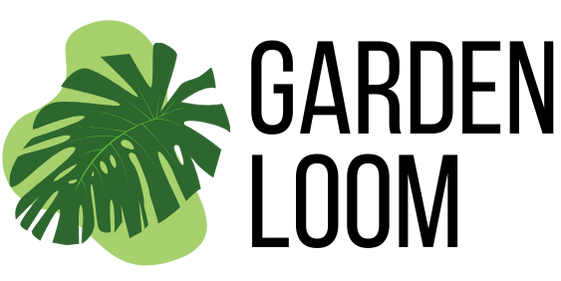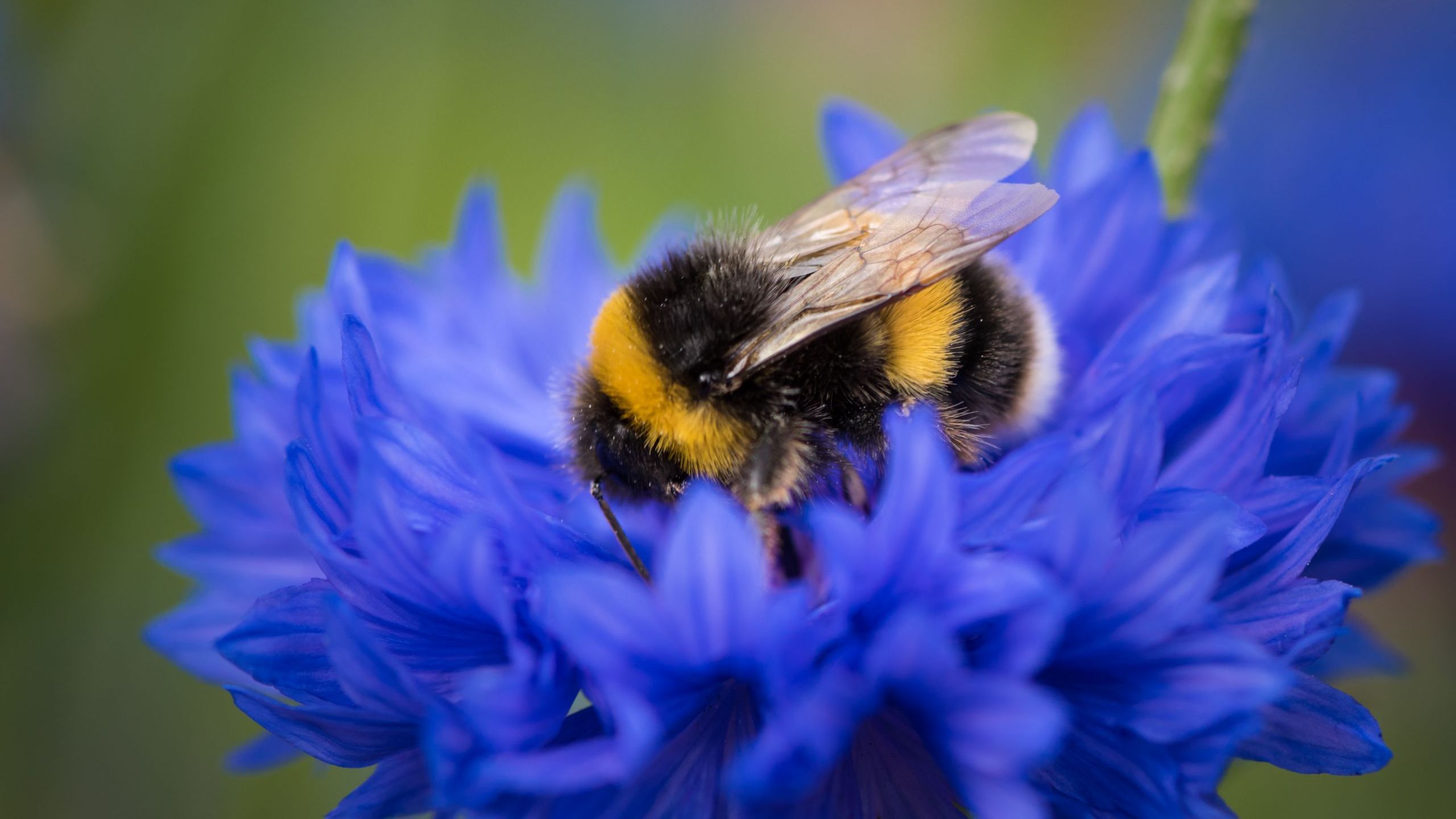Queen bumble bees are the foundational pillars of a thriving bumble bee colony. When spring arrives, these queens emerge from hibernation, searching for nectar-rich flowers to refuel and establish their nests. Understanding the flowers that queen bumble bees like is a crucial step toward creating a garden that supports these essential pollinators. By carefully selecting blooms that align with their preferences, gardeners can enjoy a more vibrant, fertile space filled with the gentle hum of buzzing pollinators.
Not only does this approach help maintain ecological balance, but it also ensures that future generations of bumble bees have the resources they need to flourish. In this article, we’ll explore why these flower choices matter, detail the characteristics queen bumble bees seek, and highlight the top ten flowers that will keep these remarkable insects happily returning year after year.
Why Queen Bumble Bees’ Flower Preferences Matter
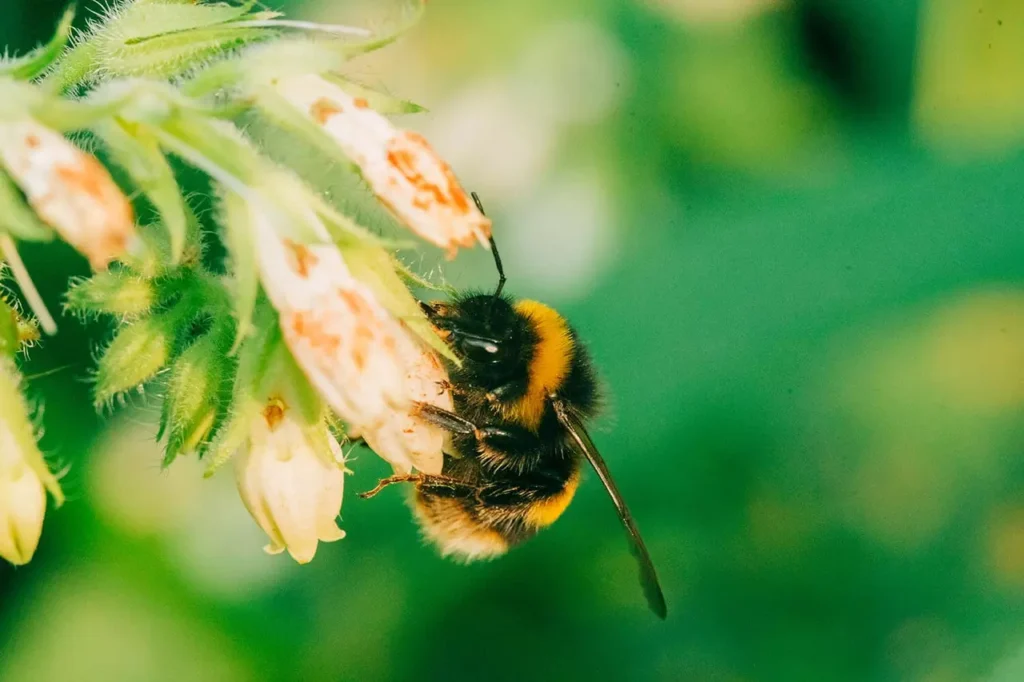
Table of Contents
Queen bumble bees play a critical role in the lifecycle of their colonies. After overwintering underground, they emerge in early spring hungry and in need of nourishment. The availability of nectar and pollen-rich flowers is vital at this stage, providing queens with the energy they need to build a new nest, lay eggs, and support the first brood of workers. Without an abundant selection of suitable blooms, queen bumble bees face an uphill struggle, and the entire colony’s survival can be jeopardized.
From a gardener’s perspective, attracting queen bumble bees has numerous benefits. Their diligent pollination efforts ensure higher yields of fruits, vegetables, and seeds. This leads to more robust flower beds and healthier, more productive gardens. By understanding which flowers that queen bumble bees like, homeowners can create an environment that not only delights the senses but also promotes a balanced, sustainable ecosystem.
Moreover, embracing bee-friendly planting can serve as a cornerstone of ecological stewardship. When gardeners select flowers well-suited to these essential pollinators, they help preserve local biodiversity, bolster resilience against climate change, and maintain the delicate balance of species interactions. Each choice to plant a nectar-rich bloom is a step toward safeguarding an ancient relationship between bees and plants—one that ensures the ongoing vitality of our gardens and the world beyond.
Key Characteristics of Flowers That Queen Bumble Bees Like
Not all blooms are created equal in the eyes of a queen bumble bee. Their flower preferences are guided by certain characteristics that make feeding easier and more efficient. First and foremost is nectar availability. Queen bumble bees, much like their worker counterparts, are attracted to flowers rich in nectar and pollen. Ample, easily accessible food sources ensure that these hungry queens can quickly refuel and continue their all-important work.
Color also plays an influential role. Bumble bees often favor flowers in shades of purple, blue, and yellow, as their vision is attuned to these hues. This means vibrant, saturated blooms can stand out, signaling a worthy feeding site. Additionally, the flower’s shape and structure matter. Flowers with a tubular or bell-shaped design, for example, often contain abundant nectar deep within their blossoms. The queen’s relatively long tongue allows her to access these rewards, while simpler blooms offer wide, open landing pads that make feeding even more convenient.
Bloom timing is another crucial consideration. Early spring flowers, available right when queens emerge from hibernation, are especially valuable. By selecting plants that stagger their bloom times, gardeners can ensure a continuous supply of nectar throughout the season. In short, the flowers that queen bumble bees like possess qualities that cater to their feeding habits—colorful displays, nectar-rich blossoms, and strategic flowering times that help these vital pollinators thrive.
Top 10 Flowers That Queen Bumble Bees Like
When selecting flowers for your garden, it’s helpful to know the specific varieties that appeal to queen bumble bees. Below are ten standout choices, each with unique qualities that make it a prime candidate. While this article focuses on the primary keyword “flowers that queen bumble bees like,” some may search for “flowers that queen bumble bees likes.” Both phrases direct us to the same goal: planting blooms that keep these regal pollinators returning year after year.
Lavender (Lavandula angustifolia)
Why Queens Love It: Lavender’s fragrant purple blooms and abundant nectar are a beacon for queen bumble bees. Its tubular flowers are easy for them to navigate, ensuring a rewarding feeding session. As the blooms appear in late spring and summer, lavender offers sustenance during a critical period when colonies are growing rapidly.
Growing Tips: Lavender thrives in full sun and well-drained soil. Prune it annually to maintain shape and encourage fresh growth. It’s also drought-tolerant, making it a low-maintenance addition to any pollinator-friendly garden.
Foxglove (Digitalis purpurea)
Why Queens Love It: Foxgloves produce tall spikes lined with bell-shaped flowers. These blooms often contain a wealth of nectar at their base, accessible to the queen’s long tongue. The bright, tubular flowers provide a comfortable feeding station, allowing queen bumble bees to spend longer periods collecting nectar without interruption.
Growing Tips: Plant foxgloves in partial shade or full sun with moist, well-drained soil. They are biennials, meaning their impressive blooms will appear in the second year. Allowing them to self-seed ensures a continuous display and steady supply of nectar.
Clover (Trifolium spp.)
Why Queens Love It: Clover blossoms, whether red or white, are nectar-rich magnets for all kinds of bees. The rounded, clustered petals form convenient nectar pockets, and the plant’s prolific blooming pattern ensures a steady food source. Since clover often blooms early and continues through the growing season, it’s an ideal staple for queen bumble bees just emerging from hibernation.
Growing Tips: Clover is hardy and adaptable, tolerating a range of soil conditions. It’s often found in lawns, but allowing a dedicated patch to bloom without frequent mowing can create a reliable nectar resource.
Bee Balm (Monarda didyma)
Why Queens Love It: As the name suggests, bee balm is a beloved choice for all pollinators. Its fiery red, pink, or purple tubular blooms brim with nectar. Queen bumble bees find these flowers particularly appealing, as the distinctive shape makes feeding efficient and rewarding. The mid to late summer bloom time extends nectar availability beyond spring.
Growing Tips: Grow bee balm in full sun to light shade with rich, well-drained soil. Good air circulation helps prevent powdery mildew. Pinching back early growth can promote a bushier plant with more blooms.
Crocus (Crocus spp.)
Why Queens Love It: Crocuses are among the earliest spring bloomers, emerging right when queen bumble bees awaken from their winter slumber. Their cup-like flowers offer easy access to nectar and pollen at a time when food sources are scarce. This early-season availability can be a lifeline for hungry queens.
Growing Tips: Plant crocus bulbs in the fall, ensuring they receive ample sunlight. They naturalize easily, forming vibrant clusters of purple, yellow, and white blooms. Once established, crocuses return each year, providing a dependable early nectar source.
Bluebells (Hyacinthoides non-scripta)
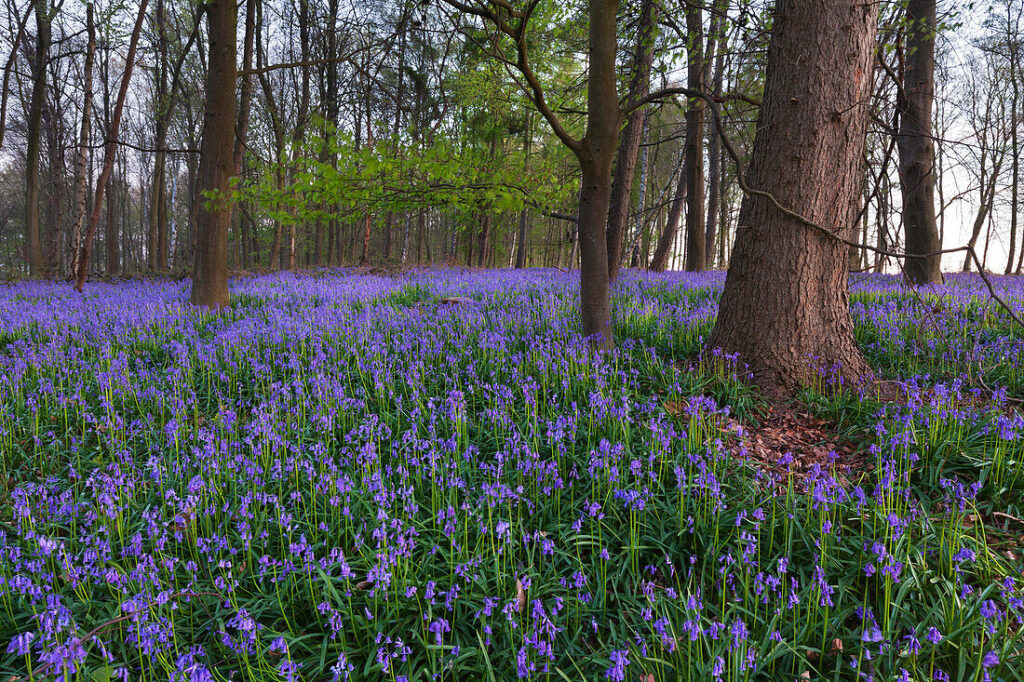
Why Queens Love It: Bluebells produce delicate, bell-shaped flowers in enchanting shades of blue and purple. These gentle blooms align perfectly with the bee’s visual spectrum and offer deep reserves of nectar. Blooming in mid to late spring, they bridge the gap between early bulbs and summer perennials. For queen bumble bees, bluebells ensure a steady supply of energy during nest-building phases.
Growing Tips: Bluebells prefer partial shade and moist, humus-rich soil. They spread naturally, creating enchanting drifts of color. Provide a woodland-like setting, and these blooms will return reliably each year.
Hollyhocks (Alcea rosea)
Why Queens Love It: Tall, stately hollyhocks feature large, open-faced flowers that act like welcoming platforms for foraging bees. Their abundant pollen and nectar content keeps queen bumble bees returning throughout the blooming season. The vertical structure also makes it easy for bees to move between blossoms with minimal effort.
Growing Tips: Hollyhocks thrive in full sun and moderately fertile, well-drained soil. They are often grown as biennials or short-lived perennials. Staking may be necessary to keep them upright, especially in windy conditions. Deadheading spent blooms can prolong the flowering season, ensuring a consistent food source.
Sunflowers (Helianthus annuus)
Why Queens Love It: Though often favored by many pollinators, sunflowers stand out as a prime feeding station. Their large, bright yellow heads offer plentiful pollen, and some varieties also provide nectar. The sheer size and visibility of sunflowers make it easy for queen bumble bees to zero in. Plus, their sturdy stems create convenient landing pads.
Growing Tips: Sunflowers grow best in full sun with well-drained soil. They’re relatively low-maintenance; just ensure they have enough water during dry spells. Planting a variety of sunflowers with staggered bloom times can keep food available over multiple weeks.
Asters (Aster spp.)
Why Queens Love It: Asters bloom in late summer to fall, extending the nectar season for queen bumble bees well beyond the prime months. Their daisy-like flowers present readily accessible nectar, while the bright purple and pink hues help attract pollinators. By flowering when many other plants have finished, asters ensure queens can continue bolstering their colonies’ resources.
Growing Tips: Asters prefer full sun and well-drained soil. Pinching back the stems in early summer can result in bushier plants with more blooms. They are cold-hardy and return each year, helping maintain a consistent late-season nectar supply.
Borage (Borago officinalis)
Why Queens Love It: Borage produces vibrant, star-shaped blue flowers that are a magnet for bees of all kinds. Its blossoms replenish nectar quickly, which means queen bumble bees can return multiple times throughout the day. The delicate petals and ample nectar reserves create a feeding haven that simplifies a queen’s search for sustenance.
Growing Tips: Borage grows best in full sun with well-drained soil. It is an annual but readily self-seeds, often popping up each year without replanting. It makes an excellent companion plant, as it can help improve the overall biodiversity in your garden.
By incorporating a mix of these blooms—some early, some midseason, and some late—you can create a garden that supports queen bumble bees from the moment they emerge until the time they prepare for overwintering. Each flower adds its own layer of ecological value, ensuring that your outdoor space is a vibrant, buzzing haven of activity.
How to Attract and Support Queen Bumble Bees Beyond Flower Selection
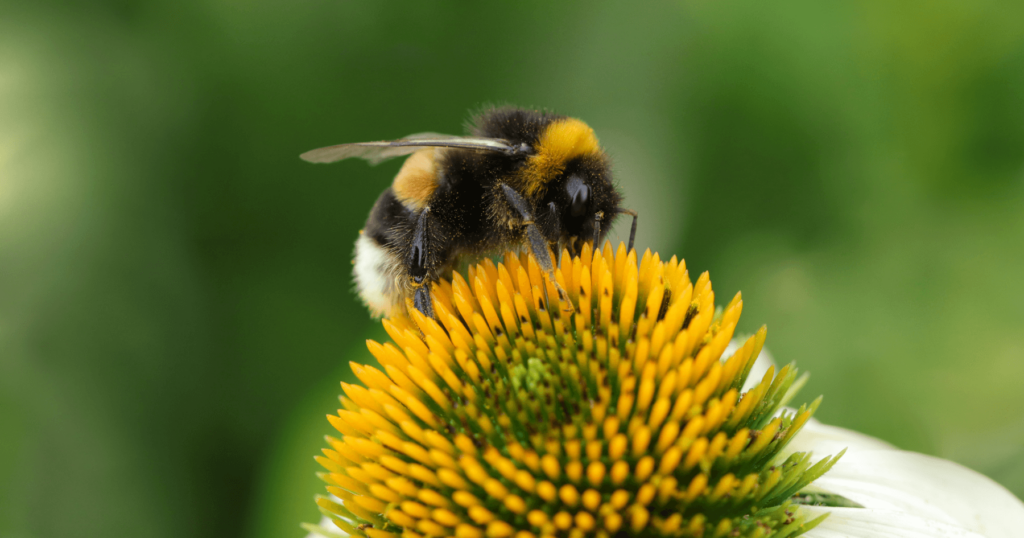
While choosing the right flowers is key to welcoming queen bumble bees, there are additional steps you can take to create a truly bee-friendly garden. Consider implementing sustainable maintenance practices to ensure that bumble bees and other beneficial insects can thrive in the long run.
First, minimize or eliminate pesticide use. Chemical sprays can harm bees directly or contaminate their nectar and pollen sources. Opt for organic or integrated pest management techniques that preserve the integrity of your garden’s ecosystem. By maintaining healthy soil and using natural methods to control pests, you’ll reduce the risk of harming your pollinator allies.
Next, provide water sources. A shallow birdbath with pebbles or a damp patch of soil can serve as a vital drinking station for thirsty bumble bees. Ensuring bees have access to clean water allows them to regulate their body temperature and maintain their hive’s health.
Another strategy is to create habitat and nesting opportunities. Queen bumble bees often nest in undisturbed areas like old rodent burrows, small brush piles, or beneath thick ground cover. By leaving a portion of your garden in a more natural state—tall grasses, leaves, and woody debris—you can encourage them to settle in and establish colonies nearby.
Finally, consider planting a succession of blooms to ensure nectar availability throughout the growing season. Combine early spring bulbs with summer perennials and late-season bloomers like asters. This continuous supply of nectar and pollen supports queen bumble bees at every stage of their lifecycle.
When you adopt these practices, you move beyond simply attracting queen bumble bees to truly nurturing them. Over time, you’ll see the rewards: a lush, pollinator-rich environment that supports not just bumble bees, but a host of other beneficial creatures that keep your garden thriving.
GardenLoom’s Resources
For more guidance on selecting the flowers that queen bumble bees like, as well as tips on sustainable gardening practices, check out the resources available at GardenLoom. Here, you’ll find additional information on seasonal planting, pollinator support, and eco-friendly solutions tailored to help gardeners cultivate a healthy, vibrant, and productive landscape.
Conclusion
Cultivating a garden filled with flowers that queen bumble bees like is a rewarding way to support your local ecosystem. By carefully selecting blooms that provide ample nectar, match the visual preferences of bees, and offer a staggered bloom season, you create a haven for these essential pollinators. Supporting queen bumble bees ultimately enhances the vitality of your garden, leading to better yields and more vibrant displays of color year after year.
As you explore these ten recommended flowers and adopt bee-friendly gardening practices, remember that each choice you make contributes to a sustainable, thriving environment. Over time, you’ll enjoy the sweet rewards of a garden visited by happy, healthy queen bumble bees—an investment that continues to pay dividends for the natural world around you.
FAQs About Flowers That Queen Bumble Bees Like
Q1: When is the best time to plant flowers for queen bumble bees?
A1: Generally, it’s best to plant a variety of flowers that bloom across the entire growing season. Early spring blooms help feed newly emerged queens, while mid- and late-season flowers ensure they have a reliable nectar supply throughout the year. Planting bulbs in the fall, followed by annuals and perennials in the spring, can create a continuous succession of blooms.
Q2: Do queen bumble bees prefer certain colors of flowers?
A2: Bumble bees are attracted to flowers in shades of purple, blue, and yellow. These hues are easier for them to see, guiding them toward nectar-rich blooms. However, planting a range of colors can help maintain a diverse garden ecosystem and offer a broader array of resources for queen bumble bees and other pollinators.
Q3: How can I tell if the flowers I’m growing have enough nectar?
A3: While you can’t directly measure nectar in your flowers, you can select varieties known for their nectar-rich properties—like lavender, bee balm, or borage. Observing bumble bee activity in your garden over time is another good indicator. If you see queen bumble bees frequently visiting and lingering on certain blooms, those flowers likely offer ample nectar.
Q4: Can I support queen bumble bees without having a large garden?
A4: Absolutely. Even a small container garden on a balcony or patio can make a difference. Choose compact plants known for attracting pollinators, such as lavender or clover, and ensure they receive adequate sunlight and water. Every flower counts in creating a supportive environment for queen bumble bees.
Q5: Should I avoid pesticides when trying to attract queen bumble bees?
A5: Yes. Pesticides, especially broad-spectrum chemical sprays, can harm bees by contaminating their food sources. Opting for organic methods, beneficial insects, or companion planting to control pests is a safer approach. Maintaining a pesticide-free garden helps ensure that queen bumble bees can feed and nest safely.
Q6: Will attracting queen bumble bees also support other pollinators?
A6: Yes. Many of the flowers that appeal to queen bumble bees also attract a wide range of pollinators, including honeybees, solitary bees, butterflies, and hummingbirds. By planting nectar-rich flowers and maintaining a healthy, chemical-free environment, you’ll create a thriving haven for all sorts of beneficial pollinators.
